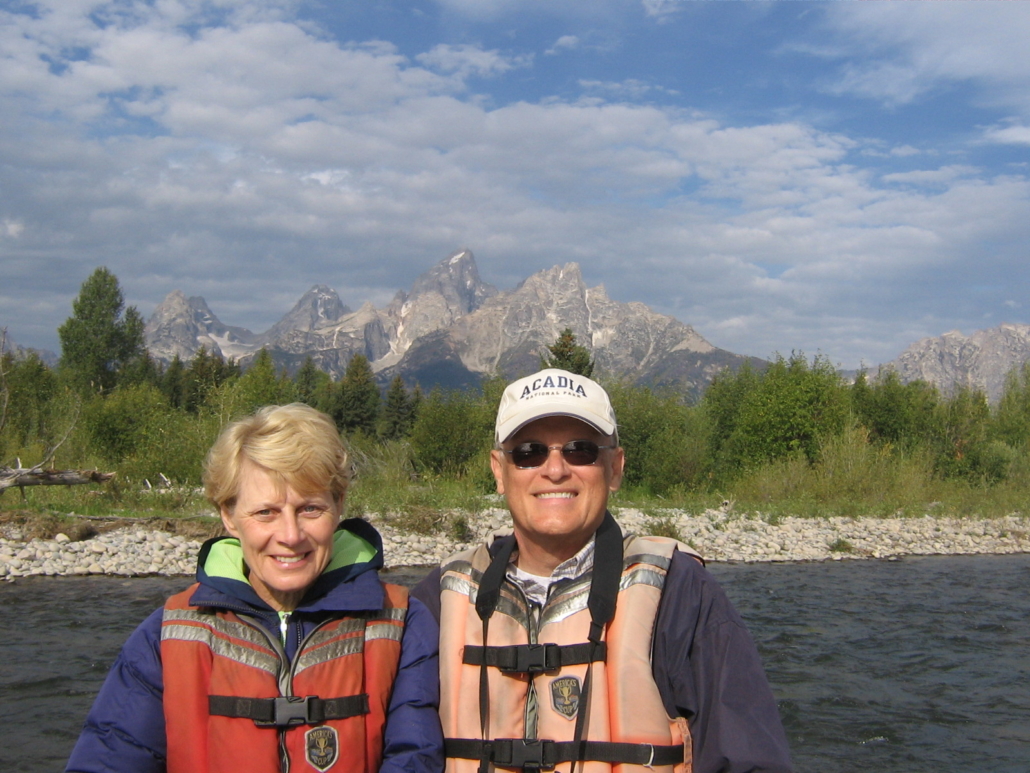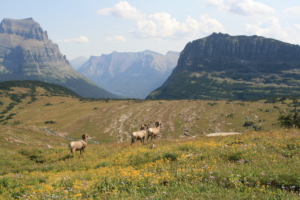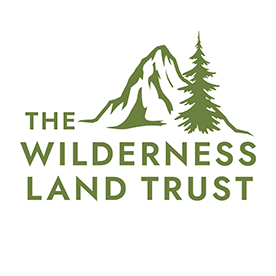Keeping a Family
Tradition Alive
Favorite Project: The Rocky Mountain National Park Project
Reason: The Trust purchased 33-acres in the Wild Basin area where wilderness users enjoy a truly remote experience just outside of Denver. The Trust then removed an existing two-story house, returning the land to its natural state. The paved access road will soon be transformed into a hiking trail, giving the public access to the view from the property’s overlook for the first time in nearly 100 years. “The notion of a mountain valley going back to nature appeals to me. It makes me feel good,” says Ray.

Ray and Beth Hohenberger enjoying the Grand Tetons on a recent visit to Jackson Hole, Wyoming.
When Ray Hohenberger was a teenager, he and his sister would pile in the family car with his parents and grandparents and head for the hills, literally. “My dad loved to take family trips. We’d drive from Ohio until we landed in places like Acadia National Park, Yellowstone, Grand Tetons, Glacier and Grand Canyon,” says Ray. “It was part of our lifestyle and I realized early on these places were special.”
Ray met his wife Beth at Ohio State University, and they raised three daughters in Northeast Ohio, continuing the tradition of the beloved family trips that shaped his teenage years. “Any excuse to get back to nature, I’d usually take. Our three daughters will testify to that under oath,” says a smiling Ray.
Some people experience wilderness days or weeks at a time, a pack on their back and sturdy shoes on their feet. Others appreciate it from afar, content with the knowledge that The Wilderness Actcontinues to steadfastly protect our natural resources for generations to come. In between is a broad spectrum of people who touch our nation’s wild places in a way that is meaningful to them.
Ray will tell you he’s somewhere in the middle. “I experience the edge of wilderness,” Ray says, recalling a recent trip to Yellowstone when he and his wife hiked up Mt. Washburn. “I stood up there staring at the Grand Tetons 70 miles away. Coming from Ohio, that is a real experience for me.”
During his day hikes, Ray says he’s observed black bears, bighorn sheep and a red fox, just to name a few. “I really enjoy seeing wild animals in their natural setting. Over the years I’ve seen just about every large mammal, except for a mountain lion. To experience all of that on day hikes, that’s the kind of thing that moves me.”
Supporting The Wilderness Land Trust
About seven years ago, Ray turned to the Internet to search for ways he could help keep our country’s wilderness intact. That’s when he discovered The Wilderness Land Trust.
“I understood that private inholdings were a fact of life, and I was immediately drawn to the Trust because it was buying those inholdings and protecting them, filling the holes in our nation’s wilderness.”

Bighorn sheep on Logan Pass, Glacier National Park. Photo credit: Ray Hohenberger.
Ray says it’s important to support organizations that are on the ground acquiring privately held land within our wilderness areas. “We have to fill in these inholdings and protect the wilderness,” says Ray. “If they end up on the open market, who knows what will happen to them.”
Private land (inholdings) is one of the greatest threats to the globally unique, 110 million-acre preservation system that millions of people have spent 54 years creating. Some 180,000 acres of private inholdings remain within federally designated wilderness areas in the lower 48 states. This land is at risk for commercial, industrial and residential development that would disrupt critical habitat and water sources, shut down trails and block public access to designated wilderness.
Ray plans to continue traveling to the “edge of wilderness” with his wife and camera, finding new places to visit and returning to his favorites, like Yellowstone. And if he is lucky enough to witness the elusive mountain lion, we hope to be among the first to know.


